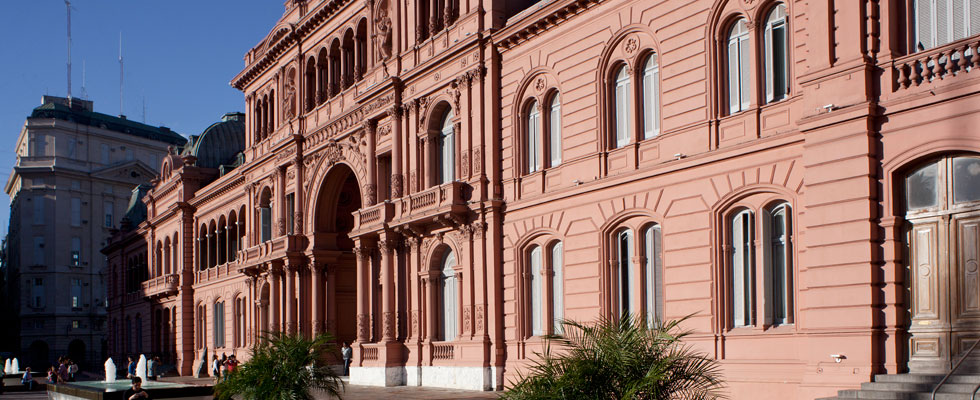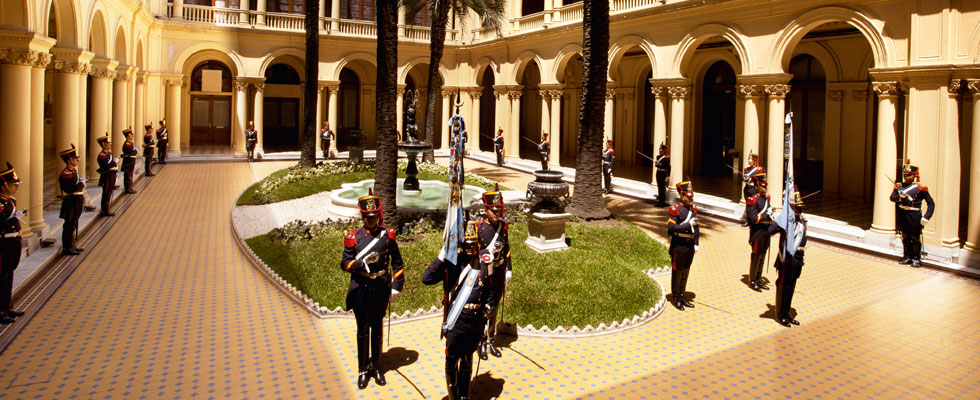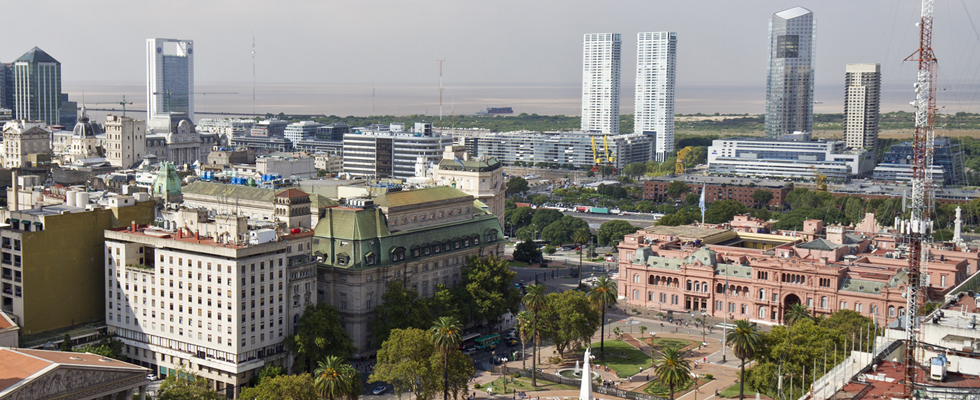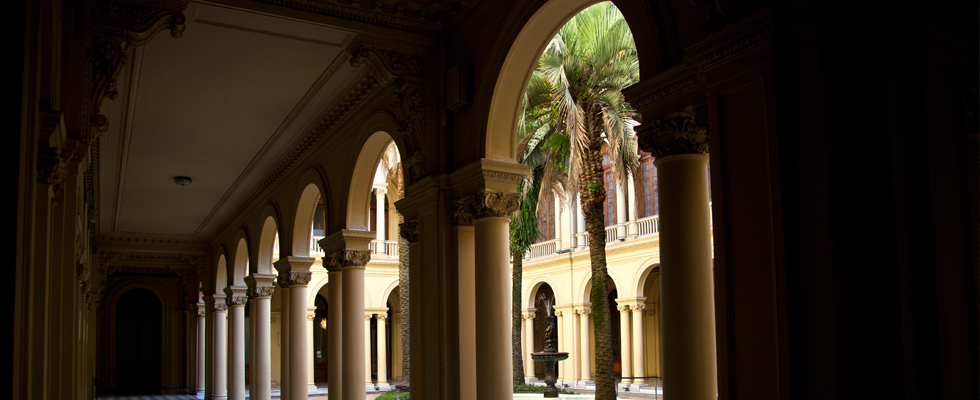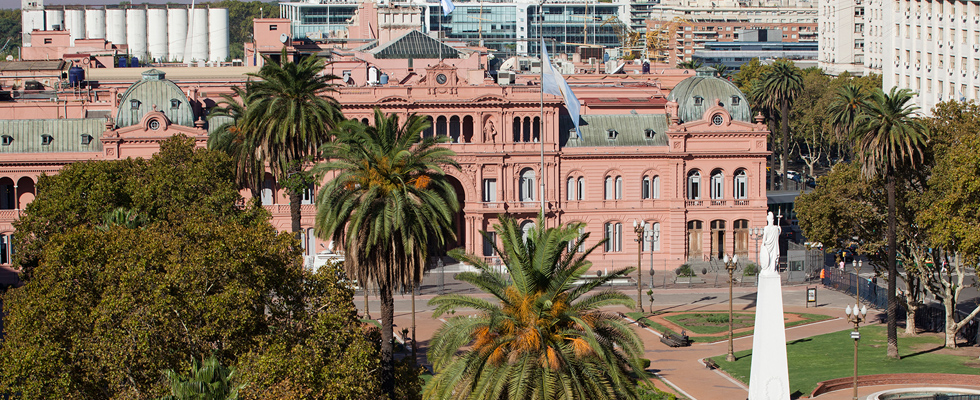Casa Rosada
Dominating the Plaza de Mayo, the Casa Rosada - or pink house - is the seat of the Argentine national government and houses the president's office.
Scene of much of the city's history, it was from the balconies of the Casa Rosada that Juan and “Evita” Perón addressed the masses during the late 1940s and early 1950s.
Visits
Free guided tours in English and Spanish. You need to reserve a place through the website: http://visitas.casarosada.gob.ar/ and take your passport with you.
The Casa Rosada Museum, behind the palace itself, stands on the spot occupied by the original colonial fort of Buenos Aires. It explores the history of Argentina, from colonial times to the present, and houses the remains of the original walls of the former customs house, as well as an acclaimed mural created by Mexican artist David Alfaro Siquieros. The museum is open Wednesday - Sunday, and on public holidays, 10am - 6pm (last entry at 5,30pm). Entry is free.
History
The Casa Rosada was constructed on the site of a fort established by the Spanish in 1580 and used by the Spanish colonial viceroys. After independence, the fort was redeveloped into a customs house by British architect Edward Taylor, and later, in 1862, the building was chosen by President Bartolomé Mitre to be the seat of his government. His successor Domingo Faustino Sarmiento later expanded the building and is believed to have ordered it to be painted pink in an attempt to diffuse political tensions by mixing the colours of the opposing political parties (the Federals used red, while the Unitarians used white). Another popular explanation for the building's distinctive colour is that it was at one painted with cows' blood as an alternative to paint because paint pealed in the humidity.
The central archway was designed by Italian architect Francisco Tamburini, who was also responisble for the original design of the Colon Theatre, and was completed in 1890.
Trivia
- The only president to live in the Casa Rosada was Roque Sáenz Peña, between 1910 and 1914.
